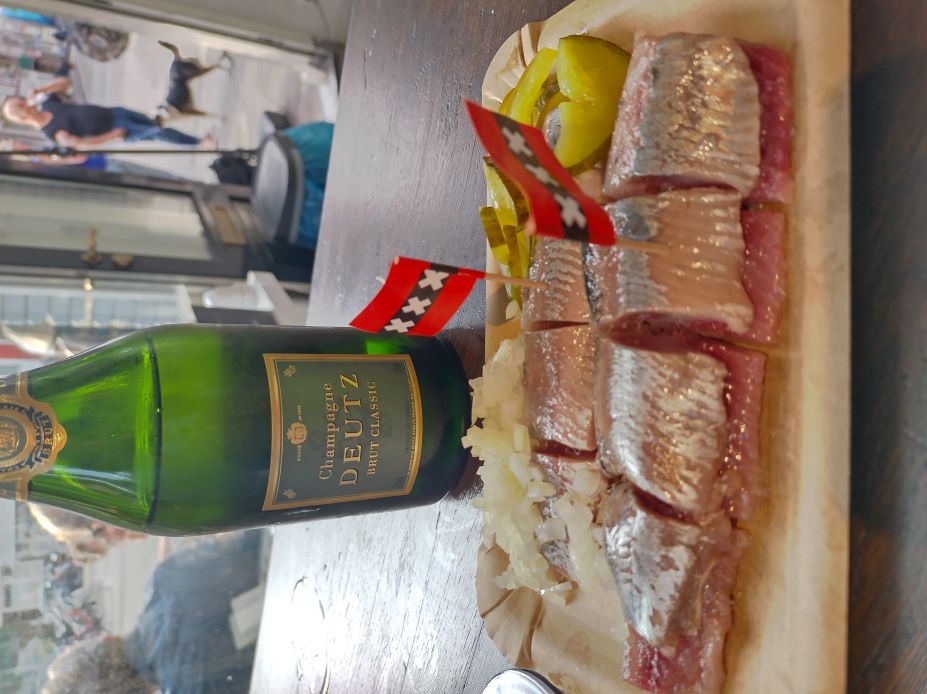Can we, still, drink Champagne on New Year’s Eve 2051?

Strange question, no? However, with climate change, average temperatures will rise from 2°C to 4°C. I already made a post about climate change and the consequences for wine production see here. But recently, I read a paper about climate change in some major wine regions including Champagne, Diversity buffers winegrowing regions from climate change losses and I wanted to share a summary of this paper and my opinion about it.
Because wine is intrinsically linked to climates, local and general climates, it can be considered as a coal mine canary for drastic weather and climate changes that could occur (Richard Smart). The authors examine the adverse effects of a 4°C increase, in several wine regions including the Champagne region. These effects include decreased yields and crop failures.
Grapevines are sensitive to extreme climates (cold, warm, or dry weather) at each time during their growth season. In spring, a frost can destroy budding buds, and warm springs trigger earlier growing seasons, where plants can still be affected by a possible frost. Wet or cold during the flowering can also harm the plant by destroying young flowers and lowering yield. Drought episodes also impact the maturity of the grapes.
But one of the consequences will be a change in the harvesting date. The growing season starts earlier, and fruit ripe earlier. But to make quality wines, fruits must be harvested when the pulp are at their optimal maturation, with a higher sugar level and optimal skin maturation as it contains most of the polyphenolic compounds (tannins, anthocyanins) responsible for the wine structure. Skin maturation requires cold nights, in the future, this may not be the case. Winemakers will have to choose between fruits with low polyphenol levels or over-ripe fruits.

If we look at the Chardonnay variety, a major variety in Champagne, we expect freshness and apple and citrus aromas. These are the characteristics of a Chardonnay in cooler climates today. But with a 4°C increase in average temperature and a much drier and warmer summer, characteristics will also change with less acidity wine and aromas around exotic fruit. The sugar level will increase and with it the alcohol in the wine. Can we imagine a Champagne with a sweeter taste, an increased alcohol level, and a different aroma profile? If we think about varieties used in Champagne, the problem is similar, as all of them are considered cold climate varieties. Is it the end of the Champagne, at least as we know it today?
Champagne in the future may taste different if nothing changes. More exotic fruits, more alcohol, less structures, and a higher level of residual sugar. No more extra brut or Brut Nature, the level of sugar will be higher than today, even higher a today sec or demi-sec bottle (between 17g to 50g of residual sugar). Ironically this level of sugar is equivalent to the level of sugar in Champagne during the 19th century. At this time, Champagne was a dessert wine.
Winegrowers are not completely helpless in the face of climate change; they have several options. One of these options is to add warm-resistant varieties. There are many possible varieties, Souvignier gris, Pinotin, and Cabernet Cortis, … These varieties are hybrids and very recent. They are not very well known to give excellent wine for the moment.
But recently, people responsible for the Champagne appellation decided to add one resistant variety to the allowed grapes in Champagne wines. The variety is named Voltis (or Colmar 2011G). Voltis is a variety that produces a high-acidity juice, that resists late frost and drought, and mildew. According to some experts, the quality of the wine made with Voltis is excellent fresh, and not too aromatic. Winemakers can only use 10% in the Champagne blend.
There are other options to limit the effect of the climate change in the region. Climate change will raise temperatures and multiply adverse climatic conditions, late froze, drought, thunderstorms, and others events. And of course, you should not forget about the difference between fruit maturation and phenolic maturation. The variety selection is crucial, In Champagne winemakers can use Pinot Meunier and Arbane, because they are late varieties and suffer less than other varieties. In the Aube department, they can even use Gamay (exceptionally authorized).
But if it is not enough, there is still a possibility, it is making Champagne still wine outside Champagne. Where in Europe can you find the same soil structure and the same kind of hills in a cooler climate? The southern part of England. This is the same geological formation, the same rocks with a cooler climate. There are more than 200,000 French citizens in London, which is more than the population of Reims. Champagne companies started to invest here a few years ago. So there is a chance to find the taste of the actual Champagne we may need to get it from London.